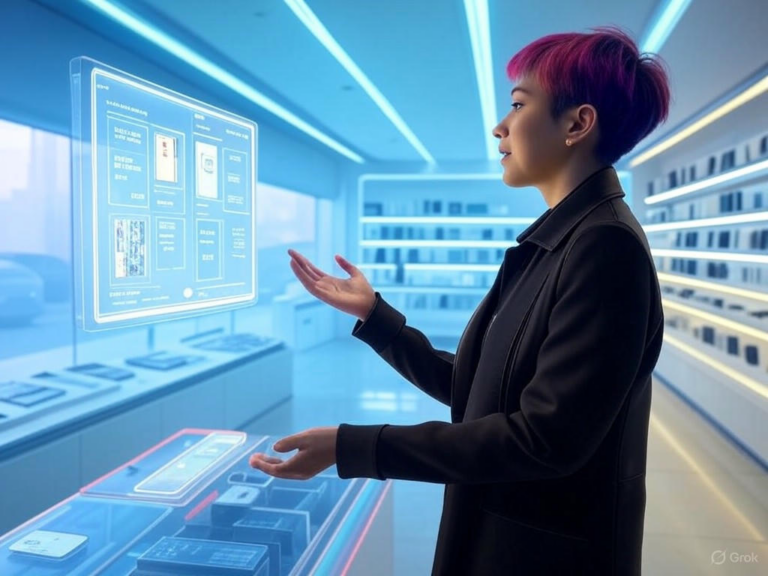
AI Code Debugging: Lightrun Secures $70M for Production Tools
Lightrun Secures $70M Funding to Transform AI Code Debugging
AI code debugging is taking center stage in software development, and Israeli startup Lightrun is leading the charge with its recent $70 million Series B funding. Announced on April 28, 2025, this investment highlights how essential real-time tools have become for tackling runtime issues in production. Have you ever spent hours hunting down a bug that’s only visible in live environments? Lightrun’s platform aims to change that by using AI to make debugging faster and more intuitive.
The funding will help Lightrun expand its AI-driven observability tools, which are already in use by major companies. This boost not only validates the demand for AI code debugging but also sets the stage for innovations that could save developers countless hours. By integrating seamlessly into everyday workflows, these tools promise to bridge the gap between development and production without the usual disruptions.
Revolutionizing Code Debugging in Production Environments
Traditional debugging often means stopping everything to make changes, but AI code debugging flips that script. Lightrun’s platform lets developers add logs and monitoring on the fly, keeping applications running smoothly. This real-time approach means you can spot and fix issues before they escalate, turning what was once a headache into a manageable task.
Imagine predicting how your code will perform in production before it even gets there—Lightrun’s AI does exactly that. It simulates behavior and suggests adjustments, ensuring seamless transitions and fewer surprises. For teams dealing with complex systems, this level of observability is a game-changer, reducing downtime and boosting overall efficiency.
From Observability to Autonomous Remediation in AI Code Debugging
AI code debugging goes beyond just watching code; it’s about fixing problems on the spot. Lightrun’s system can detect issues, debug them, and even remediate them automatically, drilling down to the exact line of code causing trouble. This means developers spend less time firefighting and more time innovating.
The process is straightforward: describe a runtime problem in simple terms, and the AI takes over. It identifies root causes, pulls in live data for verification, and offers fix suggestions almost instantly. If you’re tired of sifting through logs manually, this workflow could transform your debugging routine, making it quicker and less error-prone.
The Evolution of AI Code Debugging Capabilities
Lightrun’s story in AI code debugging started back in July 2024 with an AI tool that integrated directly into IDEs. Since then, it’s grown into a full-fledged platform that handles dynamic code instrumentation and real-time monitoring. This evolution reflects the broader shift toward smarter, more proactive development tools.
One standout feature is the ability to add precise logs to running apps without interruptions, cutting down on unnecessary data and costs. Developers can now focus on what matters most, like resolving runtime issues efficiently. It’s a far cry from older methods that required full redeployments, saving time and resources in the process.
Key Components and Features of AI Code Debugging Tools
At the heart of Lightrun’s platform are features designed for modern debugging needs. The dynamic log capability, for instance, reduces logging volumes by up to 60%, slashing costs by 31%—that’s a tangible win for any budget-conscious team. Then there’s the seamless IDE integration, which makes AI code debugging feel like a natural extension of your workflow.
Other elements include the AI debugger for autonomous issue resolution and real-time snapshots that act like virtual breakpoints without halting execution. All of this comes in a secure, SaaS-based package with top certifications like ISO-27001 and GDPR compliance. If security is a concern in your organization, these features ensure you can adopt AI code debugging without risks.
Practical Applications and Real-World Impact of AI Code Debugging
In real-world scenarios, AI code debugging shines by integrating into tools like Microsoft Visual Studio. A recent presentation showed how developers can use Lightrun to gather data from running apps, add logs dynamically, and create snapshots on the fly. This not only speeds up troubleshooting but also improves Mean Time to Resolution (MTTR) for production defects.
Think about a scenario where a critical error pops up only in production—what if you could fix it without taking the system down? That’s the power of Lightrun’s tools. Companies using it have reported big savings in time and money, making AI code debugging an essential part of their toolkit. If your team faces similar challenges, exploring these capabilities could be a smart move.
The Growing Landscape of AI Code Debugging Tools
AI code debugging isn’t just Lightrun’s domain; it’s a booming field with competitors like DebuGPT offering real-time bug detection. Tools such as Safurai use machine learning to provide insights, showing how AI is reshaping error resolution across the industry. This competition drives innovation, giving developers more options than ever.
Comparing Approaches in AI Code Debugging
To see how Lightrun stacks up, let’s compare it quickly. In terms of runtime debugging, Lightrun allows changes without redeployment, unlike traditional methods that demand restarts. Here’s a simple breakdown:
| Feature | Lightrun | DebuGPT | Traditional Debugging |
|---|---|---|---|
| Runtime Debugging | Yes, without redeployment | Limited | Requires redeployment |
| AI-Driven Recommendations | Yes, with fix suggestions | Yes | No |
| Production Safety | High, certified secure | Varies | Limited |
| Performance Impact | Minimal | Moderate | High (requires restarts) |
This comparison highlights why AI code debugging tools like Lightrun are gaining traction—they minimize disruptions and maximize efficiency.
Future Directions for AI Code Debugging
With $70 million in hand, Lightrun is eyeing expansions in AI code debugging, such as tools for cybersecurity teams to tackle bugs that pose security risks. Another angle could involve enhancing code creation to catch issues earlier in the process. For now, the focus is on strengthening their IDE integrations and overall strategy.
While code assistants might be on the horizon, Lightrun’s leaders emphasize the ongoing challenges of post-execution remediation. If you’re in development, keep an eye on these advancements—they could redefine how we handle errors.
The Impact on Software Development Practices
AI code debugging is shifting the focus from reactive fixes to proactive prevention, helping teams catch problems early and reduce costs. It’s estimated that 30% of production issues come from code errors, whether human or machine-generated, and tools like Lightrun are stepping up to address them. This evolution means developers can prioritize building new features over endless debugging sessions.
By embedding observability into the workflow, these tools improve software reliability and speed up releases. What if your team could cut bug-fixing time in half? That’s the potential of AI code debugging in action.
Getting Started with AI Code Debugging Tools
If you’re ready to dive in, Lightrun offers easy plugins for IDEs like Visual Studio, with streamlined onboarding to get you up and running quickly. Start by checking out their documentation at docs.lightrun.com for tips on integration. Here’s a quick tip: begin with a small pilot project to see how it fits your workflow before scaling up.
Actionable advice? Test it on a common runtime issue in your environment and track the results. This hands-on approach can help you appreciate the benefits of AI code debugging firsthand.
Conclusion: Embracing the Future of AI Code Debugging
Lightrun’s $70 million funding marks a pivotal moment for AI code debugging, proving its value in modern development. As systems grow more complex, these tools will be crucial for maintaining high-quality code and minimizing disruptions. If you’re grappling with production challenges, platforms like Lightrun could be the solution you’ve been seeking.
What are your thoughts on AI’s role in debugging? We’d love to hear your experiences in the comments below—share this post if it sparked any ideas, or explore more on our site for related tools and tips.
References
- TechCrunch. “Lightrun grabs $70M using AI to debug code in production.” Link
- DevOps.com. “Lightrun adds generative AI tool to debug code in runtime environments.” Link
- Lightrun Official Site. “Home page.” Link
- DataGrom. “Lightrun secures $70M for AI-powered code debugging.” Link
- FinOps Foundation. “Lightrun member profile.” Link
- BrowserStack. “Guide to AI debugging tools.” Link
- Microsoft Visual Studio. “Lightrun demonstration video.” Link
- Workik. “AI code debugger overview.” Link
AI code debugging, Lightrun funding, code observability, production debugging, runtime issues, developer tools, AI-driven remediation, observability platforms, software debugging tools, IDE integration







